
Dreaming in the World’s Largest Greenhouses
[caption id="Eden_Feature" align="aligncenter" width="1024"]
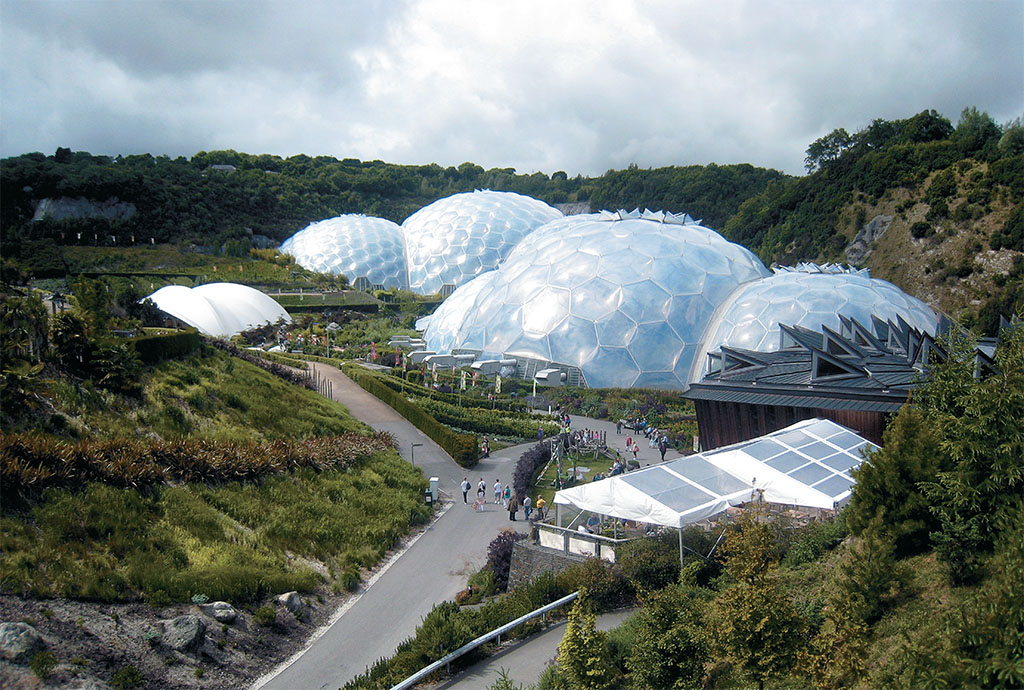
JEAN PASCHKE
In the beginning were the Lost Gardens of Heligan. These large 18th-century gardens in Cornwall were neglected until a team led by Dutch archaeologist and music producer Tim Smit restored them in the early 1990s.
Then, as Smit and his colleagues discussed how the project had affected them, and the many ways in which plants and people are connected, the Eden Project was born. Allegedly, it was first designed on a pub napkin and headquartered in a small garden shed. Their mission was to “promote the understanding and responsible management of the vital relationship between plants, people and resources, leading toward a sustainable future for all.”
Beginning in 1995, they raised money, mostly from the National Lottery through the Millennium Project, but also through grants, loans, sponsorships and funds generated by Eden itself. Nicholas Grimshaw and Partners were hired as contractors.
The initial £83 million was enough to build two biomes, or greenhouses, near St. Austell, Cornwall, in a tapped-out china clay mine. This unlikely site was 60 meters deep, 15 meters below the water table and had no soil. Work soon came to a halt as frustrated workers had to wait out a 100-day rain. But the rain brought a benefit, as springs that nobody knew existed opened up, ensuring that no structures would be built on top of them and lead to leakage problems later.
In 2000, The Eden Project opened as the Big Build. It was still a building site full of cranes and bulldozers, and its 250 miles of scaffolding earned it a place in the Guiness Book of World Records. Visitors donned high-visibility jackets and hard hats and rode in a land train to see the remarkable structure, the largest group of greenhouses in the world, coming to life.
[caption id="Eden_img1" align="aligncenter" width="748"]
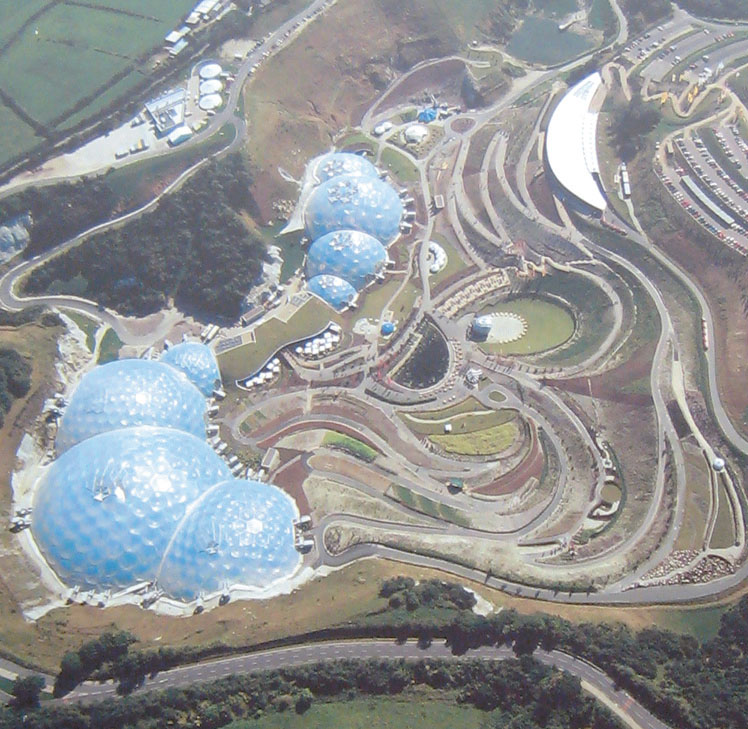
JEAN PASCHKE
[caption id="Eden_img2" align="aligncenter" width="881"]
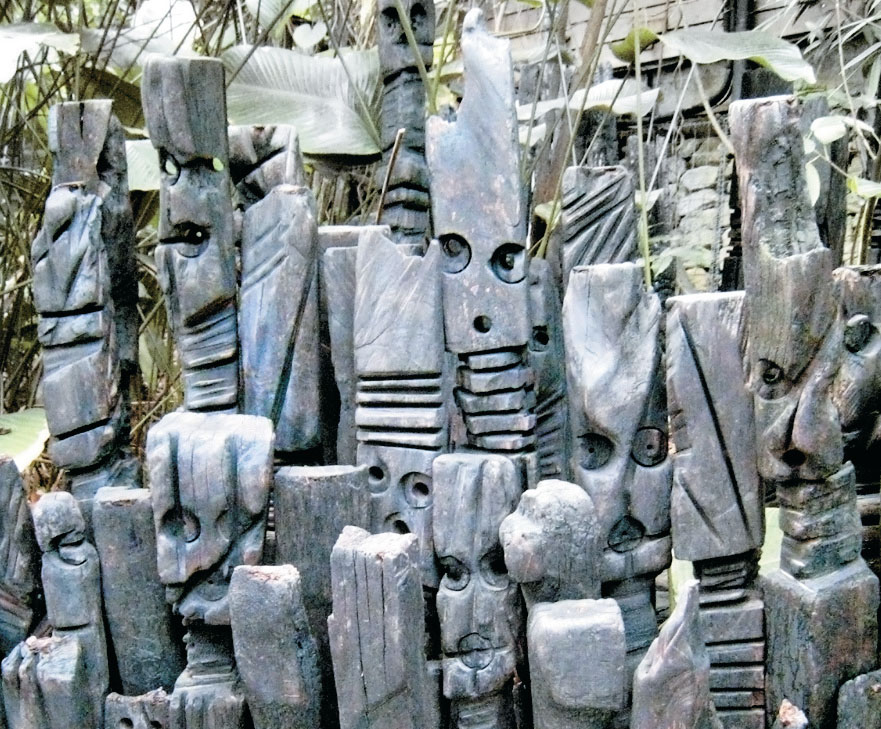
JEAN PASCHKE
[caption id="Eden_img3" align="aligncenter" width="1024"]
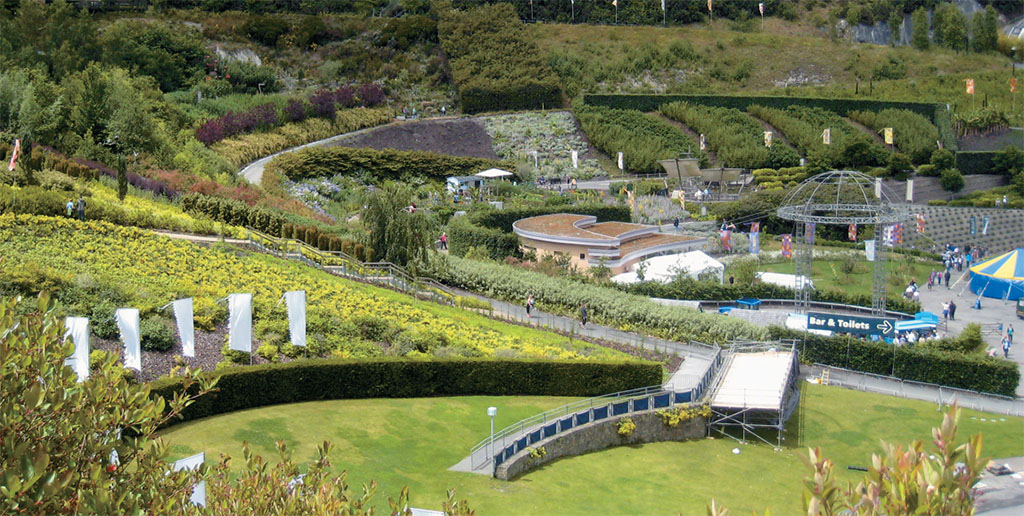
JEAN PASCHKE
[caption id="Eden_img4" align="aligncenter" width="443"]
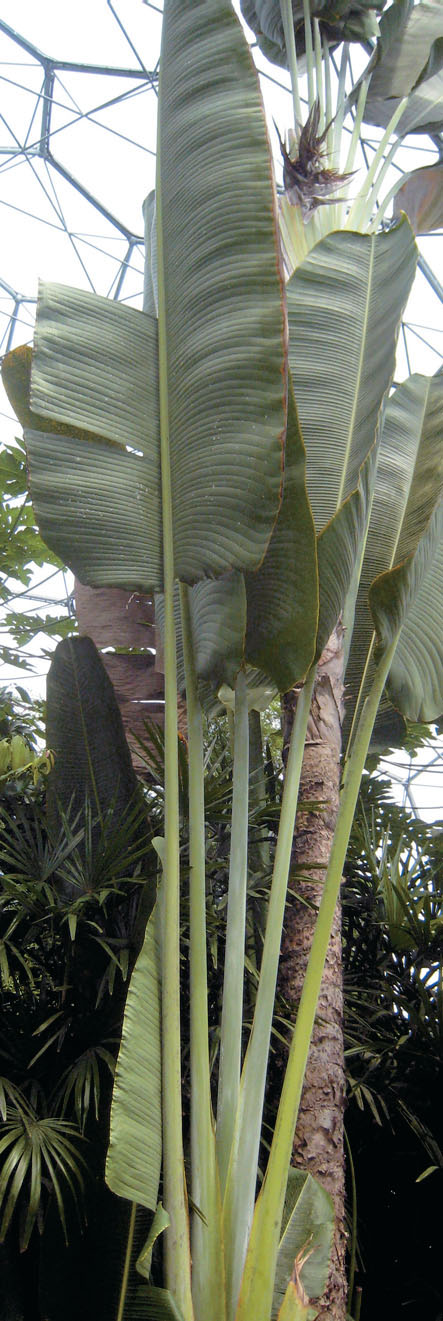
JEAN PASCHKE
The Eden Project officially opened in 2001, when the London Times dubbed it the eighth wonder of the world. Some two million people came annually for the first few years, and seeing 40 or 50 tour buses in the lot was not unusual. Now, Eden receives a million or so visitors a year.
More conventional buildings have been added, along with a third biome. These three—representing three world climates—are the Humid Tropics Biome, the Warm Temperate Biome and the Roofless Biome.
Other areas of the site gather wild Cornwall, trees in myth and folklore, plants for perfumes and chemicals, and gardens of the world. Several cafes utilize vegetables and herbs grown in the garden area, and the gift shop offers everything from artisan breads to actual plants and gardening tools.
Resembling shining white soap bubbles that seem to have come gently to rest over the landscape, the biomes are built of glazed ethyl tetra flouro ethylene (ETFE), and they are strong, transparent and lightweight, as any greenhouse should be. None of the individual pieces are curved, yet they form a rounded geodesic dome. They can be pumped up or deflated as the temperature changes. Misters moisten the air; ground-level pipes irrigate the soil, while the heat source is mainly the sun.
[caption id="Eden_img5" align="aligncenter" width="1024"]
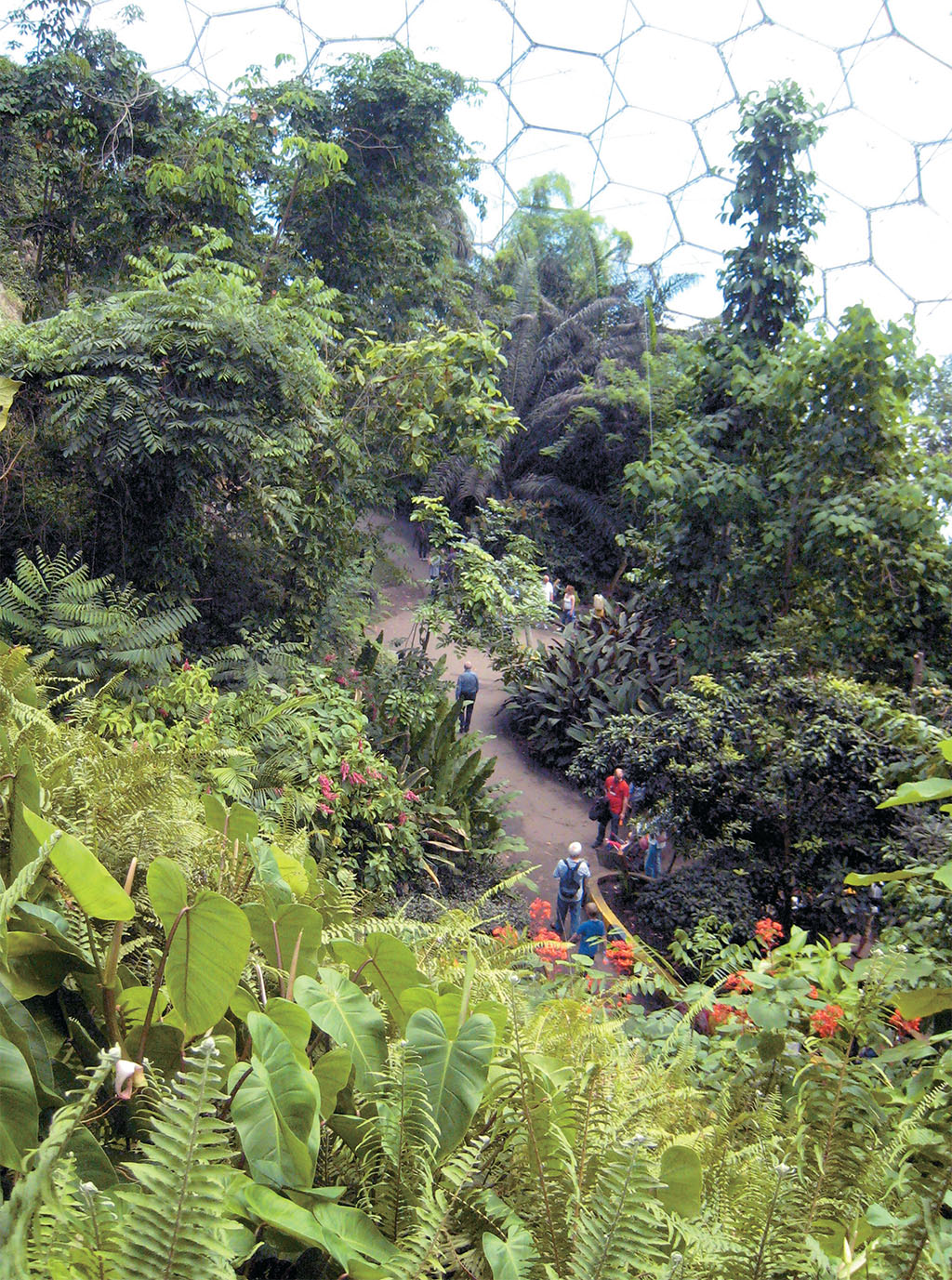
JEAN PASCHKE
[caption id="Eden_img6" align="aligncenter" width="1024"]
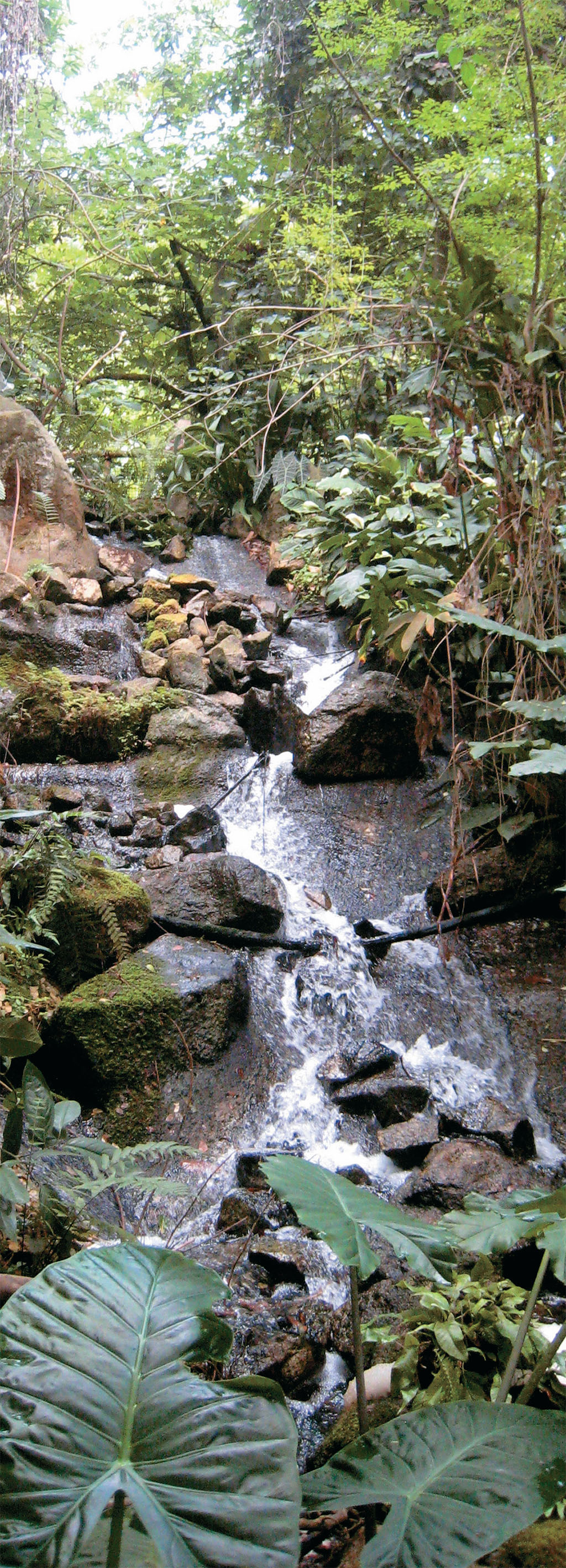
JEAN PASCHKE
Soil came from china clay debris, composted bark, and the dustbins of Cornwall, thousands of cubic meters of it, its decomposition helped along in the most natural way possible: by worms. Composition of the soil varies from a sandy mix in the Mediterranean area to a nutrient-free combination in a South African area, where fertile soil is toxic to some plants.
Sculptures dot the grounds, as likely to be made of discarded computers and TV sets as bronze or stone. A set of wooden timbers damaged in a fire in Falmouth were transformed by a South African sculptor into a forest of little totems. Driftwood in the hands of another sculptor becomes horses and pigs. An enormous granite sunflower dominates the Core, which is the education, arts and events hub. All the logos and signs are printed in natural dyes. Informational kiosks dot the area. A clever show called The Plant Takeaway, or Dead Cat, demonstrates how dependent our lives are on plants.
Visitors to the Tropics Biome, the largest of the greenhouses, should dress lightly. A thorough, thoughtful visit to this hot, humid area can take an hour. Plants in riotous colors represent the biota of South America, West Africa, the Seychelles and Malaysia. Red hot cattails, pink mussaenda and yellow lollypop flowers line the wooden walkways. Rice grows in a paddy, mangroves in a swamp. The bright pink blooms of the Barringtonia tree look as though they were molded of plastic. The lofty jacara palm takes eight years to grow and has an edible inner core. The tree dies when this core is removed, which is why it’s endangered in South America. The traveler’s palm always faces the sun, providing a handy compass for the lost.
A hut made of bamboo, corrugated tin, canvas and matting demonstrates how people displaced by disasters can build shelters out of anything at hand. A Malaysian house built of locally available materials along with recycled items has room for animals to live underneath. An enormous ship represents the way products were once sent around the world.
The Oceanic area features a gushing (recycled) waterfall. A high walkway called The Lookout allows for bird’s-eye viewing, while actual birds and lizards sometimes stray in and earn their keep by eating insect pests. Other resident bugs are Eden Project employees. They are transported in little bamboo pots on pulleys to the treetops, where they earn their keep by eating more pernicious critters. More pests are captured by UV lamps or are eliminated with “soft” chemicals, such as soaps and oils. Abseilers and workers on cherry-pickers prune the truly enormous trees when necessary. The Rainforest Balloon, with its dangling harness, lets the horticultural staff explore the canopy to conduct experiments or take samples.
We learn how practical plants provide chewing gum, cola, rubber, chocolate, coffee, vanilla, tapioca, medicines, and various tropical fruits and spices. Sugar cane is hauled out of the jungle in a wildly colorful truck. Surprisingly, most of the roughly one million plants in Eden—representing almost 4,000 species—were not taken from the wild, but grown from seed in the Eden greenhouses.
A much cooler environment is the Mediterranean Biome, which starts with a journey through Italy, complete with a church tower, colorful tiles and terra cotta jars. Abstract images of doves line the path. A 150-year-old olive tree transplanted from Sicily becomes a symbol of life and divinity, with its olive oil recognized today as a health food. Some think of the Mediterranean as an area of lush growth, but in fact, the soil can be poor and thin, and drought can devastate crops. In Eden, plants get sufficient water and fertilizers to flourish.
Italy morphs into South Africa, where the fynbos (Africaans for fine bush) is the predominant vegetation. It consists of a variety of shrubs, some of which need smoke to germinate and must be fire-managed. Aloe vera bloom bright orange in the winter, sharing space with cactus, arum lilies and bloodroot. Also on display are poppies, baby blue eyes and lupins of California, which, we learn, was home to one third of all Native American tribes.
Dancing maenads mirroring the shapes of grape vines celebrate Bacchus, who is depicted as a bull. This god allegedly came up with a delightful new way to enjoy grape juice and is duly recognized for it.
The final stop is roofless, and represents plants native to Cornwall and other regions with similar climates, such as Chile, the Himalayas and Australia. Visible from a viewing platform outside the Visitor Centre, it lets visitors look over the entire site and teaches them more about our dependence on crops. An orchard is in the works.
Ongoing projects at Eden include twice-daily storytelling by “pollinators,” who pollinate not plants but people with their inspiring stories and songs. It’s possible to take tours with professional gardeners and horticulturalists or just let the kids play. Eden is a popular stop for school groups. The ambitious can climb one of five rock walls of varying difficulty.
Outside its precincts, the Eden Project works with the Cornish community on local projects. It also aids vulnerable communities around the world on projects such as restoring rainforest in Thailand, helping the Maldives to become carbon neutral within the next 10 years and assisting 14 Gambian villages to create sustainable projects.
The Eden Project hosts a number of events throughout the year. There are concerts by groups such as Primal Scream and The Flaming Lips, along with circus and dance performances. Autumn brings spooky Halloween doings, while the winter festival features an ice rink, processions and story telling.
In January 2011 Tim Smit was awarded the KBE for his work on Heligan and Eden. He feels his work is not done. Smit says, “Sometimes I feel nostalgic and go and sit in a shed and dream a little more.”
Volunteers and donations are always welcome at the Eden Project. For more information, see www.edenproject.com.
[caption id="Eden_img7" align="aligncenter" width="1024"]
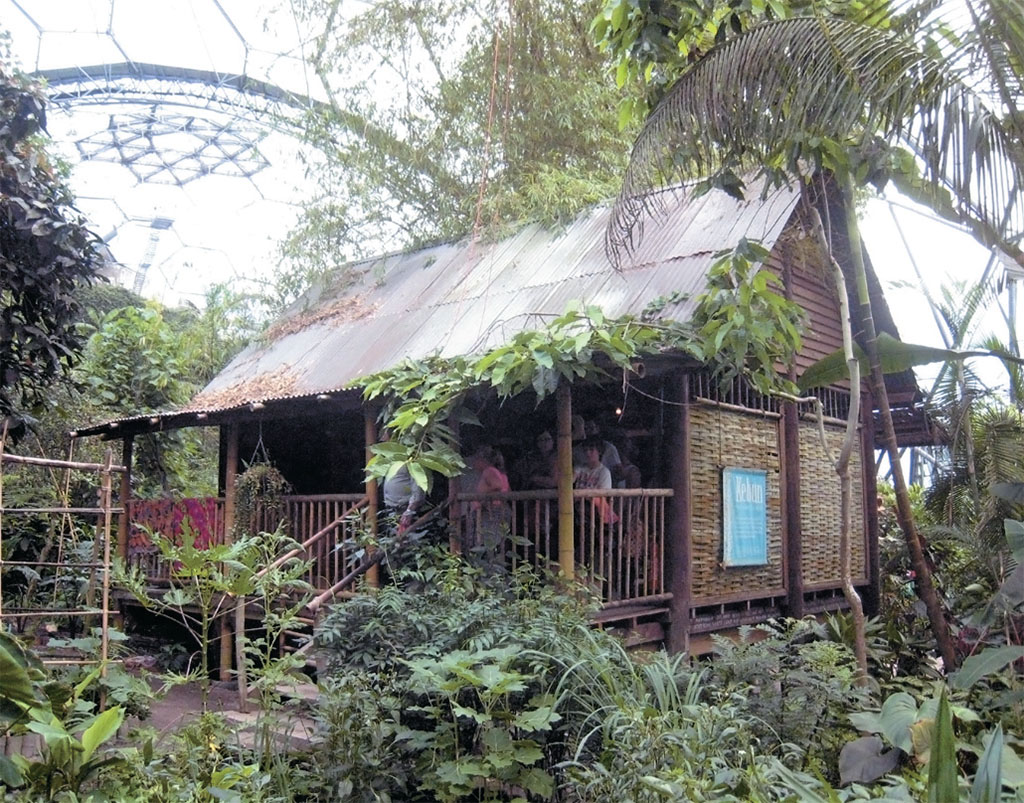
JEAN PASCHKE
[caption id="Eden_img8" align="aligncenter" width="1024"]

JEAN PASCHKE
[caption id="Eden_img9" align="aligncenter" width="1024"]

JEAN PASCHKE





Comments